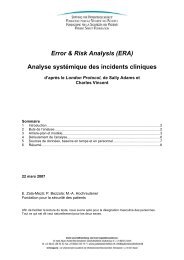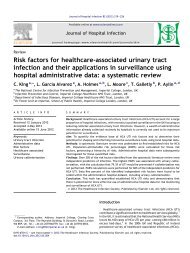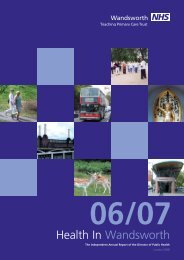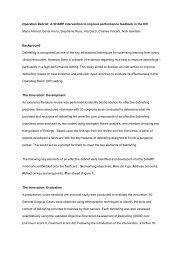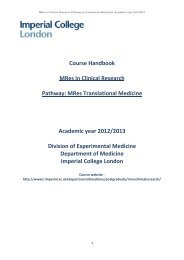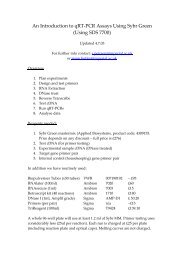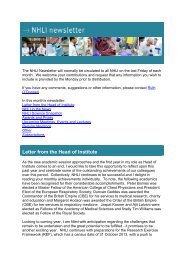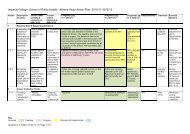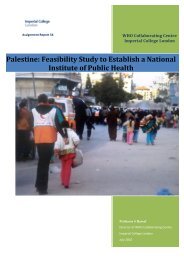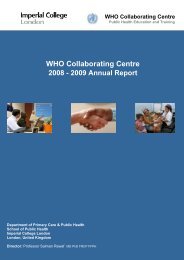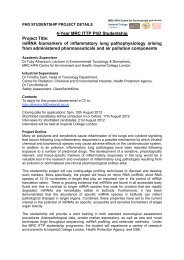QOF Plus Year 1 - Imperial College London
QOF Plus Year 1 - Imperial College London
QOF Plus Year 1 - Imperial College London
You also want an ePaper? Increase the reach of your titles
YUMPU automatically turns print PDFs into web optimized ePapers that Google loves.
Assessment of new clinical and records indicatorsStructured consultation with local stakeholders drawn from the PCT and from primary care wasused further inform indicator development. As part of this consultation, local stakeholders wereasked to assess each proposed new indicator in the clinical and records domains using the OECD(Organisation for Economic Co-operation and Development) criteria of importance, scientificsoundness and feasibility as defined above (Marshall et al., 2004), and also to assess eachindicator for clarity. Each indicator was rated using a 9-point Likert scale. Local stakeholders werealso asked to comment on any aspect of the indicator – including wording of the indicator andproposed thresholds.The consultation method used incorporated aspects of both the Delphi Technique and the RANDAppropriateness Method as described above. After obtaining questionnaire responses from thelocal stakeholder panel in the first round, a second round of structured consultation was used toachieve consensus among respondents. Respondents were provided with a summary of thepanel’s responses from the first round and asked to consider their own responses in light of this,rating each indicator again using the same method as in the first round.As a result, all proposed new indicators were rated by the panel as scientifically sound, relevant,feasible and clear, and consensus was achieved for all indicators.Assessment of new indicators in non-clinical domainsThe process of assessment was informed by consultation with practices on the group’s <strong>QOF</strong>+proposals for non-clinical indicators. Feedback received from practices was used by the <strong>QOF</strong>+Development Group to help assess the indicators further in terms of acceptability, importance,soundness (face-validity), feasibility and clarity of the proposed indicators.Response to feedback on proposed new indicatorsA number of proposed indicators were assessed by the group as being either not acceptable topractices, not sound in terms of face validity or not feasible, following internal review and takingaccount of feedback from practices and from local and national experts. These includedindicators in the patient experience and patient safety domains. These indicators weresubsequently removed.There is currently much debate in the literature about the value of paying practices according tothe results of patient surveys, with concern about the potential perverse effects associated withthis approach (Elwyn et al. 2007). Concerns about indicators relating to the results of patientsurveys were also expressed locally by a number of practices as part of the consultation process.This stimulated further debate within the <strong>QOF</strong>+ Development Group relating to the justificationfor inclusion of these indicators. As a result, these indicators were removed. However, during thefinal phases of the <strong>QOF</strong>+ development process, the results of the Picker Institute Patient Surveyfor Hammersmith and Fulham were published, and these showed that Hammersmith and Fulhampractices were performing below the national average for areas relating to patient access,including being seen within 48 hours, and experiences with getting through to practices on thephone. As a result, the PCT considered inclusion of indicators relating to the results of a localpractice Picker Institute patient survey for these two dimensions compared with the national136



